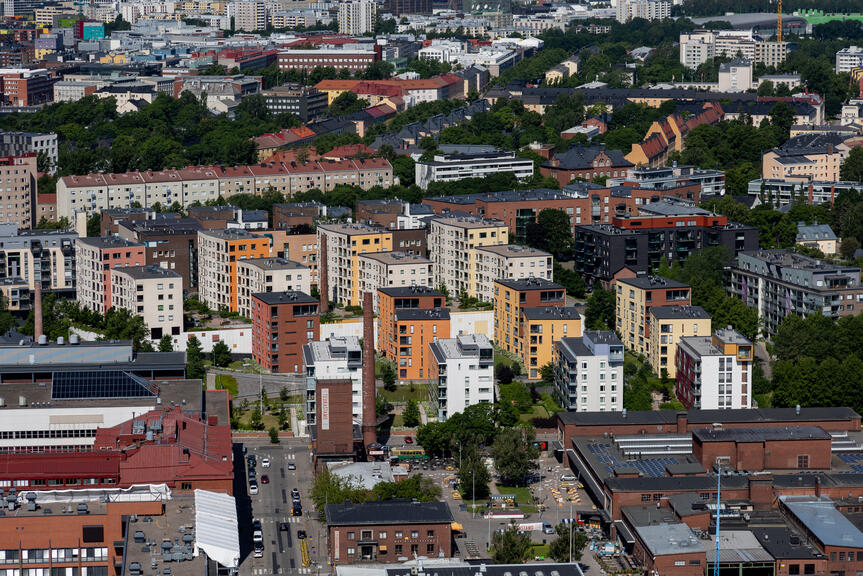
Over the ten-year period of 2013–2023, the proportion of foreign language-speakers saw the strongest growth in regions with a high percentage of foreign-language speakers at the beginning of the period. On the other hand, the growth was slowest in the regions with the lowest share of foreign-language speakers in 2013. In the regions with the highest proportion of foreign-language speakers at the beginning of the period, the increase was almost 20 percentage points.
Migration had the greatest impact on the change of language structure in different areas
Domestic and international migration had the greatest impact on the language structure in different areas between 2013 and 2023. International migration increased the number of population in all areas. Relatively speaking, the impact of migration from abroad was the highest in areas with the largest proportion of foreign-language speakers at the beginning of the review period. Migration between Helsinki and the rest of Finland reduced the proportion of native speakers in areas where the proportion of foreign speakers was higher than the regional average.
The number of births of foreign-language speakers exceeded the number of deaths of foreign-language speakers in all regions
Natural population growth increased the number of foreign-language speakers in all regions. Natural population growth refers to the difference between the number of births and deaths. The number of deaths among native-language speakers exceeded the number of births in regions with a higher than average proportion of foreign-language speakers. The proportion of births among foreign-language speakers in relation to all births was higher the higher the proportion of foreign-language speakers was of the total population of the region.
The difference in natural population growth between the different language groups can be explained by the different age structures of these groups, as the relative proportion of aging population is higher among native-language speakers and, in turn, the proportion of population in childbearing age is lower than among foreign-language speakers. Between 2014 and 2023, more than 90% of the deceased were native-language speakers.
Area-specific concentration of foreign-language speakers will continue in the coming years
The number and proportion of foreign-language speakers in Helsinki has seen strong growth in recent years. Almost every fifth Helsinki resident was a foreign-language speaker in 2023. The trend of the past years can be expected to continue, if the positive net migration from abroad remains high. If the trends of migration and natural population growth continue at a similar pace, the differences between areas in the proportion of foreign-language speakers will continue to grow in the coming years.


